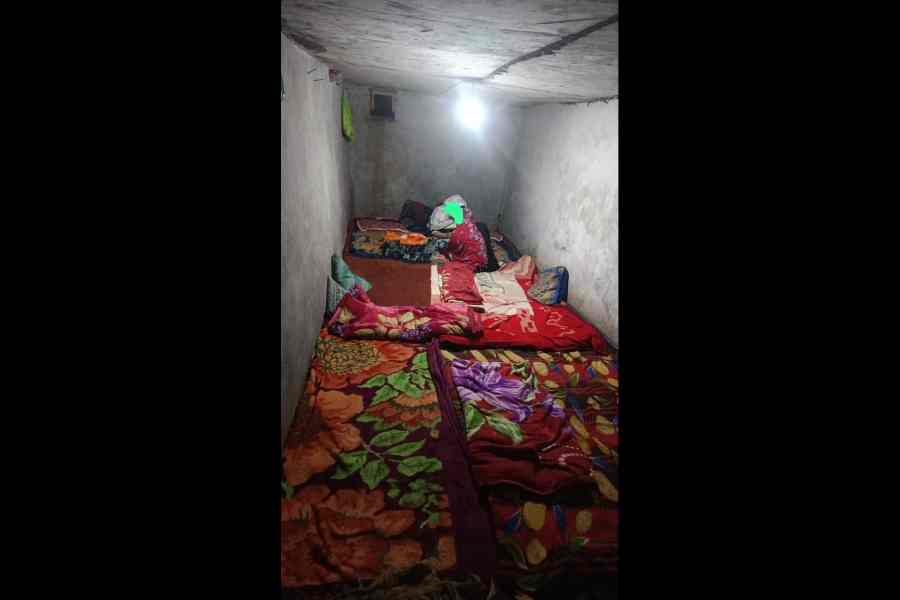
Jorhat, Oct. 13: A nondescript iron bridge measuring 10.5 metres in height and 9.5 metres in width is what the forest department of Assam hopes and prays will help connect the once fractured community of the endangered western hoolock gibbon living on either side of a train track that divides the Hoollongapar Gibbon wildlife sanctuary in Jorhat district.
Iron ropes have been tied on both sides of the green-coloured bridge, which straddles the tracks, and fixed to trees on either side of the tracks as approach way to the bridge.
Sources said the forest department initially wanted to construct two such bridges at a distance of 800 metres from each other but the railways objected to it, saying since the bridge would straddle the tracks they would survey the area and construct the bridge for which Dispur would have to provide funds.
The bridge, constructed by the NF Railway with a funding of Rs 8.34 lakh by the state forest department, was completed last week.
"These animals are shy, they tree hop and won't walk or run across the tracks. This makes this bridge essential," said divisional forest officer, Jorhat, Swapan Saikia.
He said the bridge was perhaps the first of its kind initiative in India to facilitate free movement of wildlife in a habitat. It aims to increase the population of hoolock gibbons, the only ape found in India, by restoring the gene flow between the gibbon communities divided by the tracks. It also aims at stopping inbreeding.
The railroad track was laid about a century ago and involved cutting away a huge swathe of forest which divided the community of gibbons. "The animals are monogamous couples and when separated won't raise families with other mates," said Saikia.
The building of the bridge was necessitated after the possibility of relocating the tracks, which is the only route to Upper Assam districts, was found infeasible by the railways because of lack of land, the huge costs involved and the small size of the sanctuary.
Saikia said creepers would be planted in the area so that the bridge is camouflaged and the animals can start using it.
In the past few years, fruit-bearing and canopy trees have been planted by the department in association with Aaranyak, an NGO, to extend the forest cover near the bridge area.
Saikia said the department would now initiate the process of constructing the second bridge, which will be constructed by the railways with funding by the department.
Dilip Chetry, executive director of Gibbon Research Centre and honorary wildlife warden of Assam, whose centre first mooted the idea, said he would request the department to install CCTVs to know whether the gibbons use the bridge.
Saikia said a decade ago, when the department came up with the idea of constructing the bridge, there were about 20 gibbon families having a population of below 70. According to a census carried out six years ago, there were about 30 families of gibbons having a population of 110 with a majority of them residing on the northern side of the forest.
This sanctuary is the only one in the country to be named after gibbons, the only ape found in India. It is spread over 20.98 square km and is also the only one in India to house seven species of primates (many endangered).
Gibbon is on the Red List of Threatened Species (vulnerable) of the International Union for Conservation of Nature (IUCN) and is listed in Schedule 1 of the Wildlife Protection Act, 1972 (amended in 2002). Apart from the northeastern states, they are found in Bangladesh, Myanmar and the southern parts of China.










